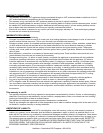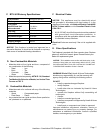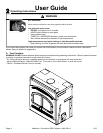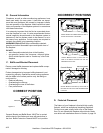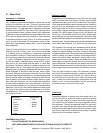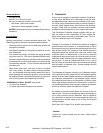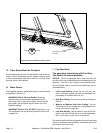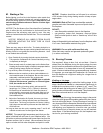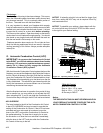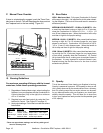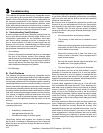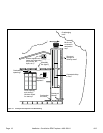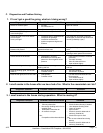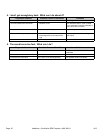Special offers from our partners!

Find Replacement BBQ Parts for 20,308 Models. Repair your BBQ today.

4/12
Heatilator • Constitution EPA Fireplace • 480-1091H
Page 13
To provide reasonable re safety, the following should be
given serious consideration:
1. Install at least one smoke detector on each oor of
your home to ensure your safety. They should be
located away from the heating appliance and close
to the sleeping areas. Follow the smoke detector
manufacturer’s placement and installation instructions,
and be sure to maintain regularly.
2. A conveniently located Class A re extinguisher to
contend with small res resulting from burning embers.
3. A practiced evacuation plan, consisting of at least two
escape routes.
4. A plan to deal with a chimney re as follows:
In the event of a chimney re:
a. Notify re department
b. Prepare occupants for immediate evacuation.
c. Close all openings into the stove.
d. While awaiting re department, watch for ignition
of adjacent combustibles from overheated stove
pipe, hot embers or sparks from the chimney.
K. Over-Firing Your Appliance
1. Symptoms of Over-Firing
• Symptoms of over-ring may include one or more of
the following:
• Chimney connector or appliance glowing
• Roaring, rumbling noises
• Loud cracking or banging sounds
• Metal warping
• Chimney re
J. Fire Safety
• Immediately close the door and air controls to reduce air
supply to the re.
• If you suspect a chimney re, call the re department and
evacuate your house.
• Contact your local chimney professional and have your
stove and stove pipe inspected for any damage.
• Do not use your stove until the chimney professional in-
forms you it is safe to do so.
Hearth & Home Technologies WILL NOT warranty stoves
that exhibit evidence of over-ring. Evidence of over-ring
includes, but is not limited to:
• Warped air tube
• Deteriorated refractory brick retainers
• Deteriorated bafe and other interior components
2. What To Do if Your Stove is Over-Firing
In the event of a chimney re:
• Have the chimney and adjacent structure inspected by
qualied professionals. Hearth & Home Technologies
recommends that NFI or CSIA certied professionals, or
technicians under the direction of certied professionals,
conduct a minimum of an NFPA 211 Level 2 inspection
of the chimney.
• Replace components of the chimney and replace as
specied by the professionals.
• Ensure all joints are properly engaged and the chimney
is properly secured.
A chimney re can permanently damage your chimney sys-
tem. Failure to replace damaged components and make
proper repairs creates risk of re.
L. Chimney Fire



